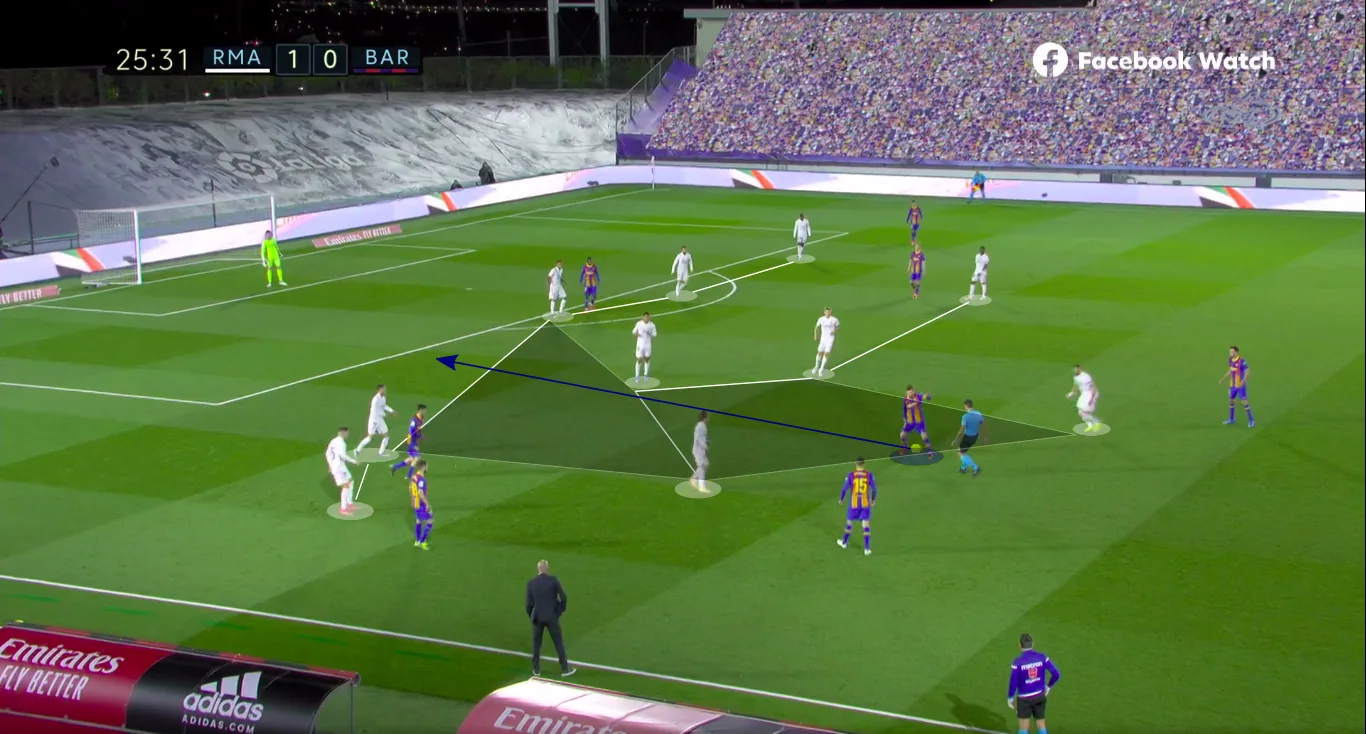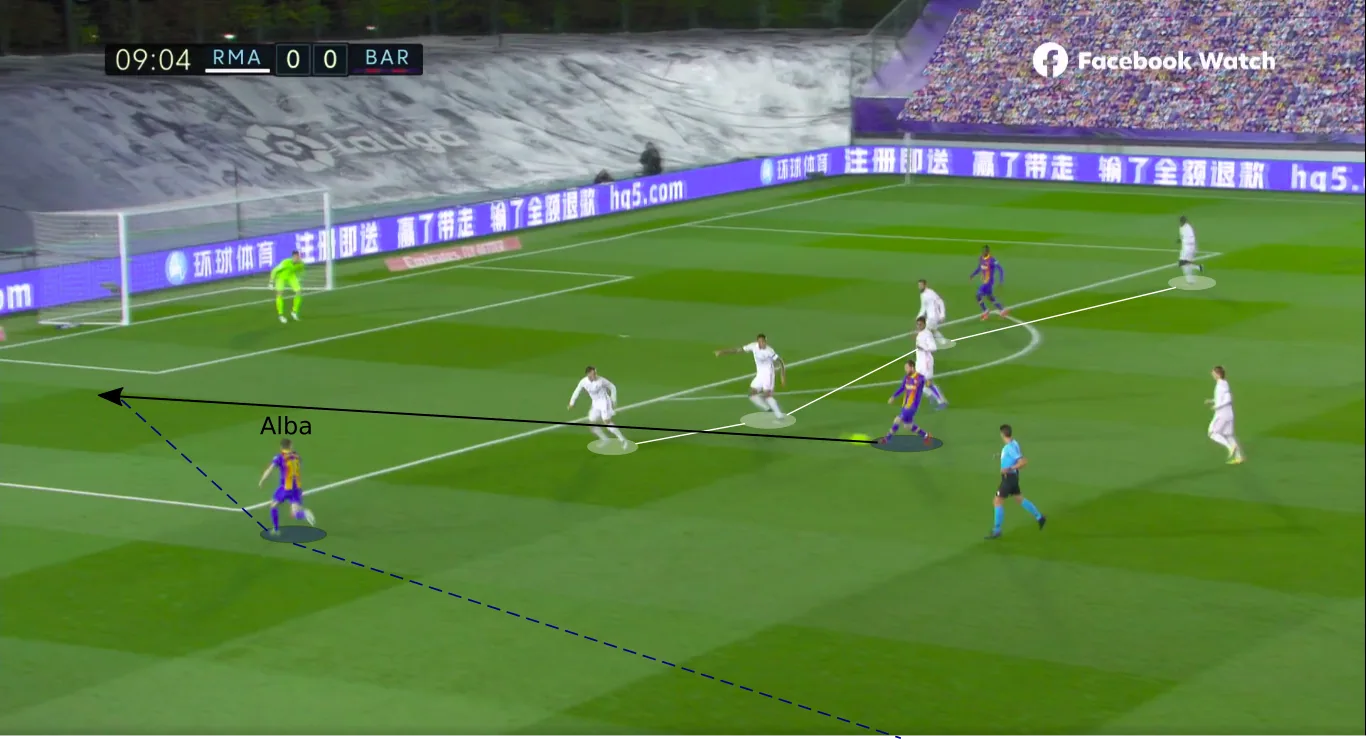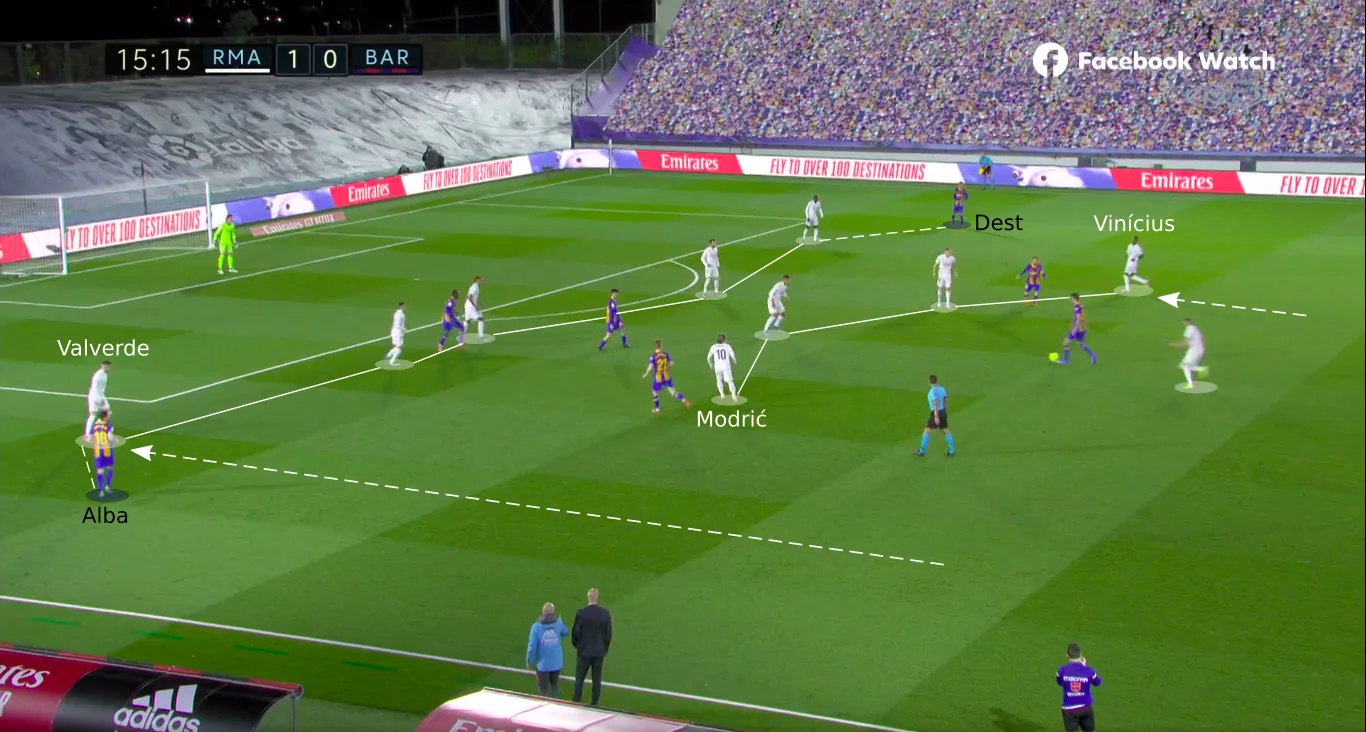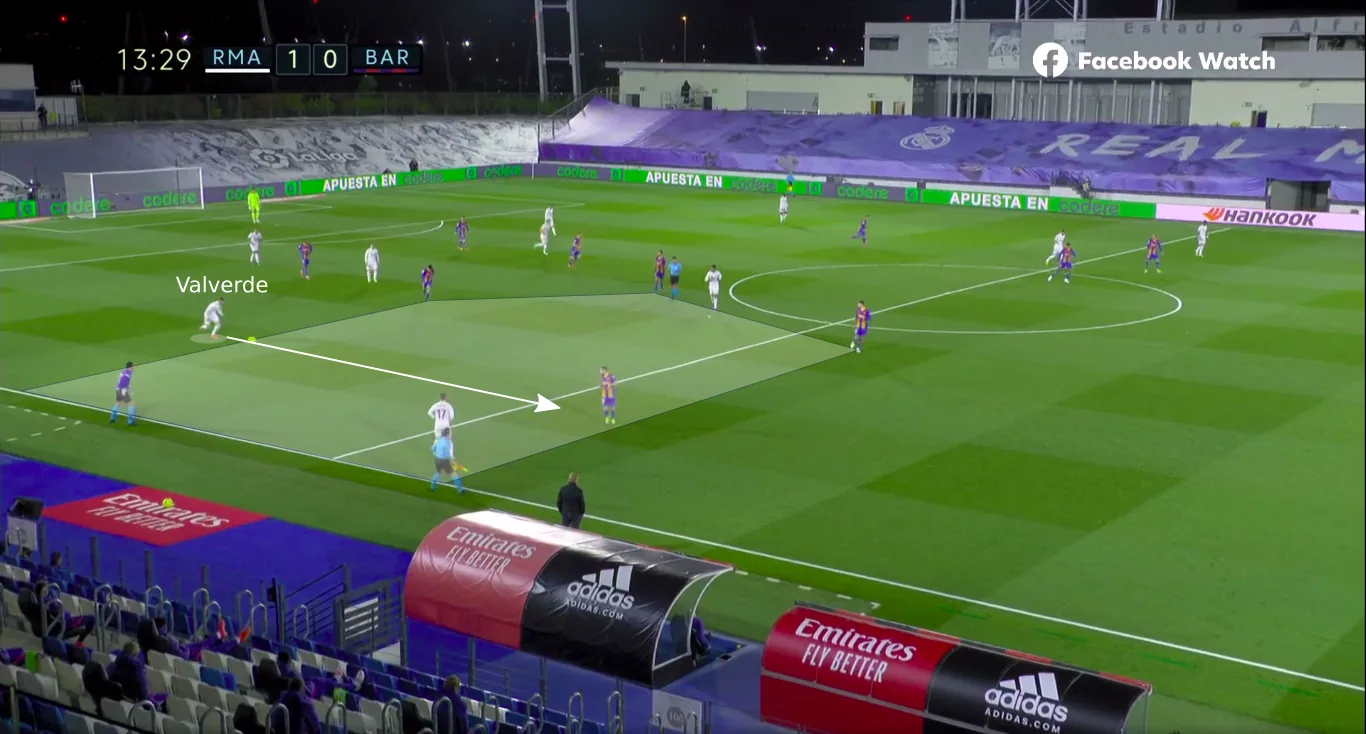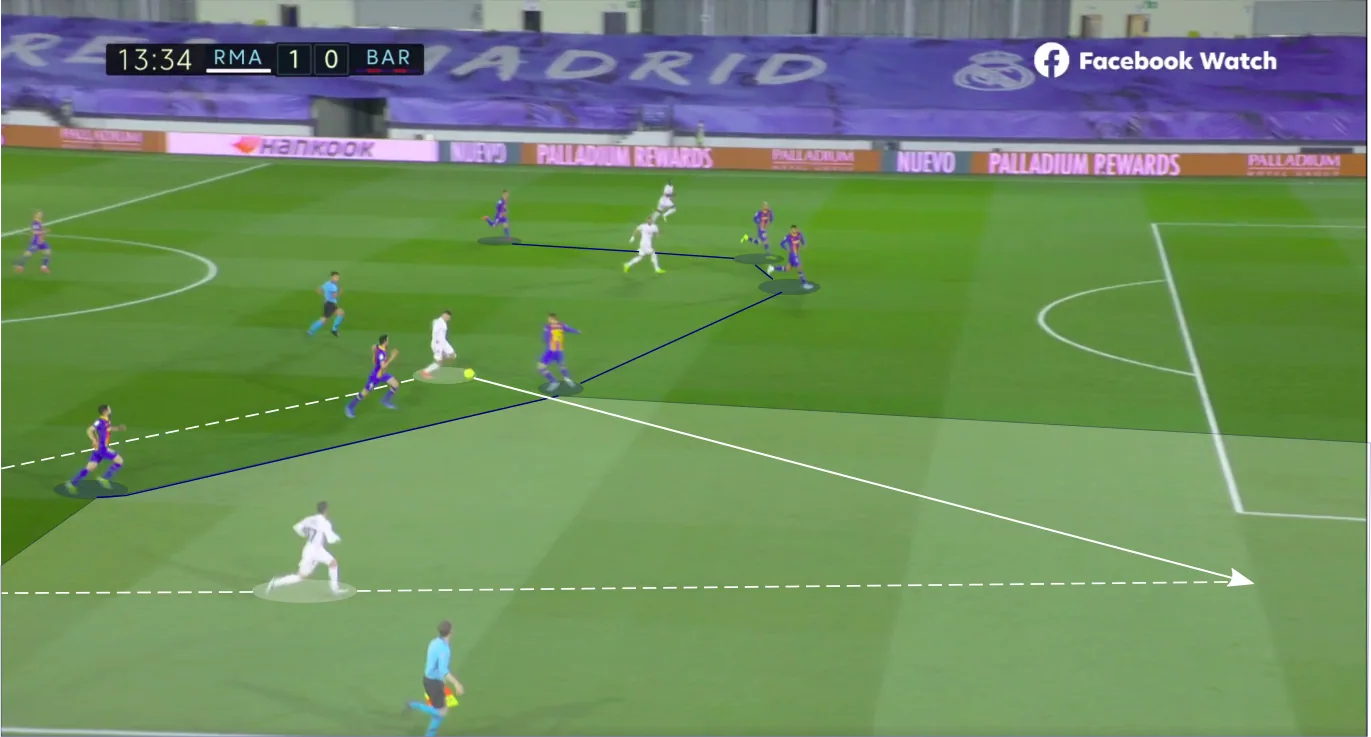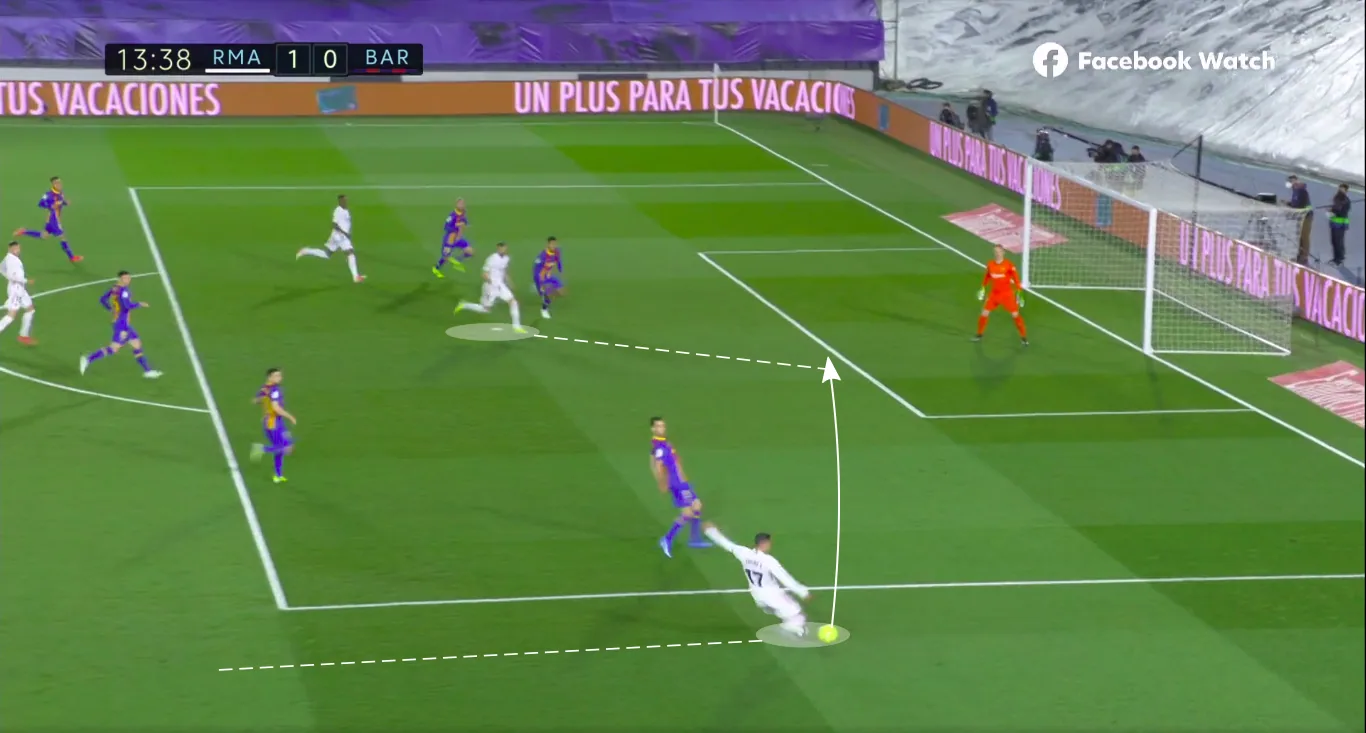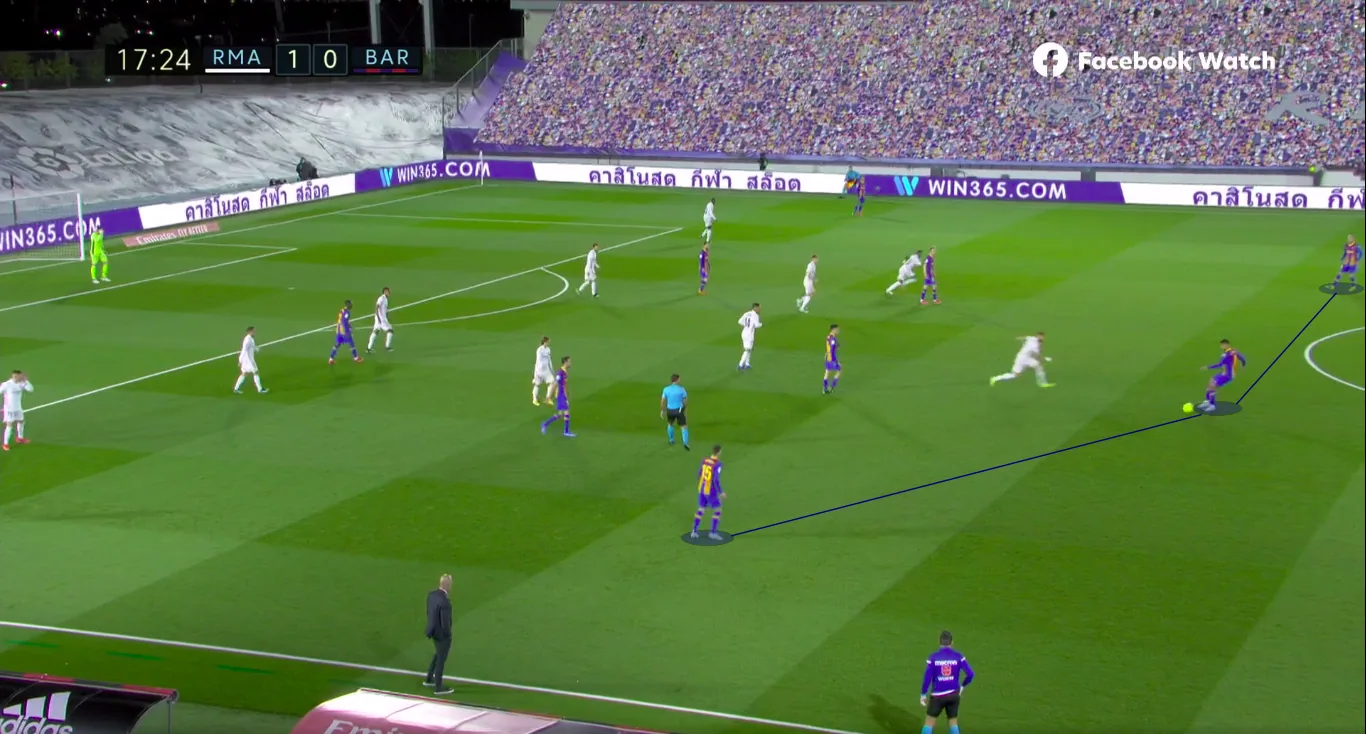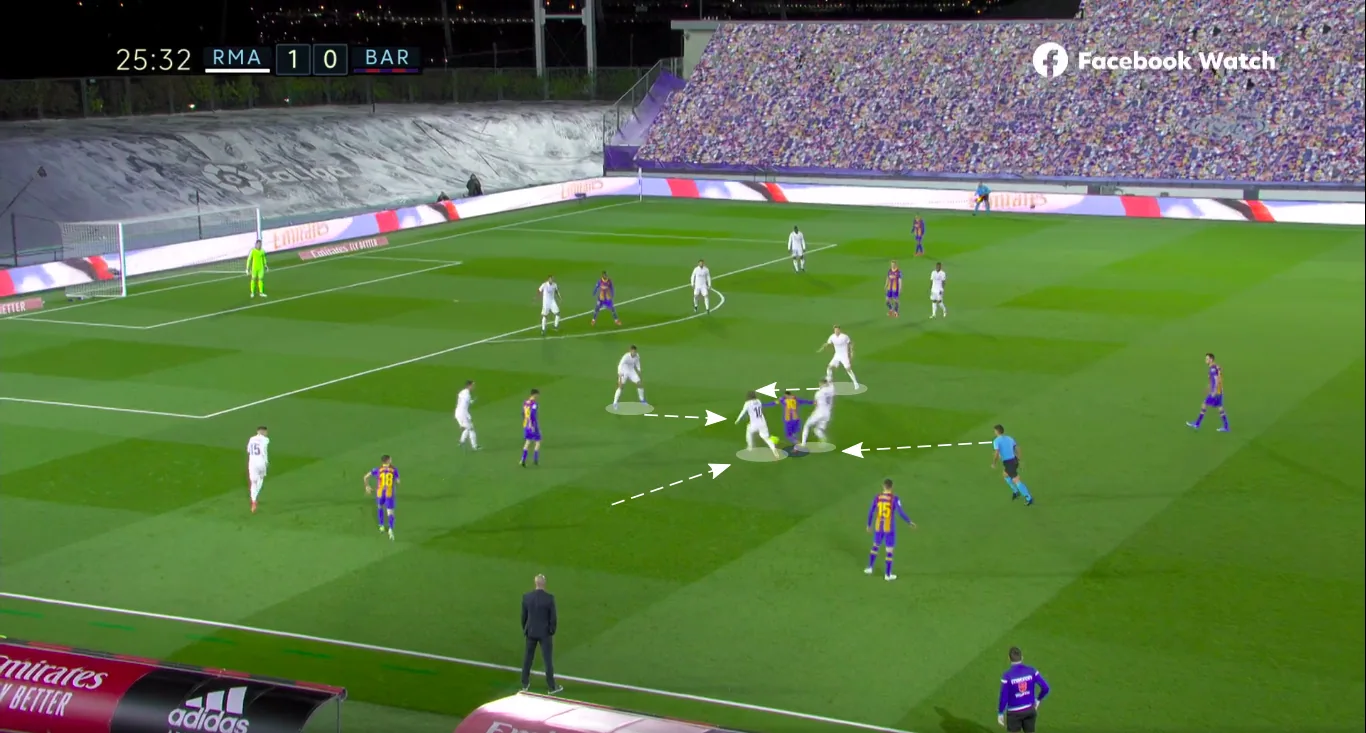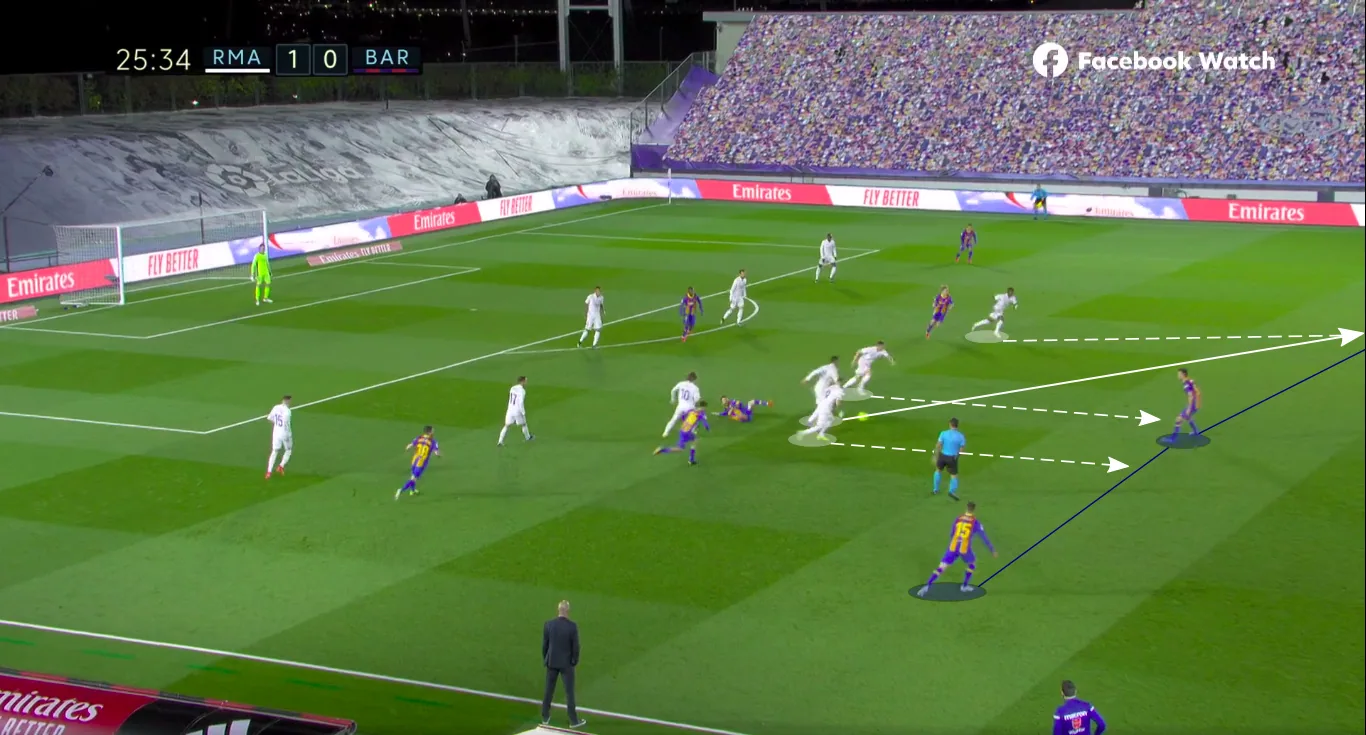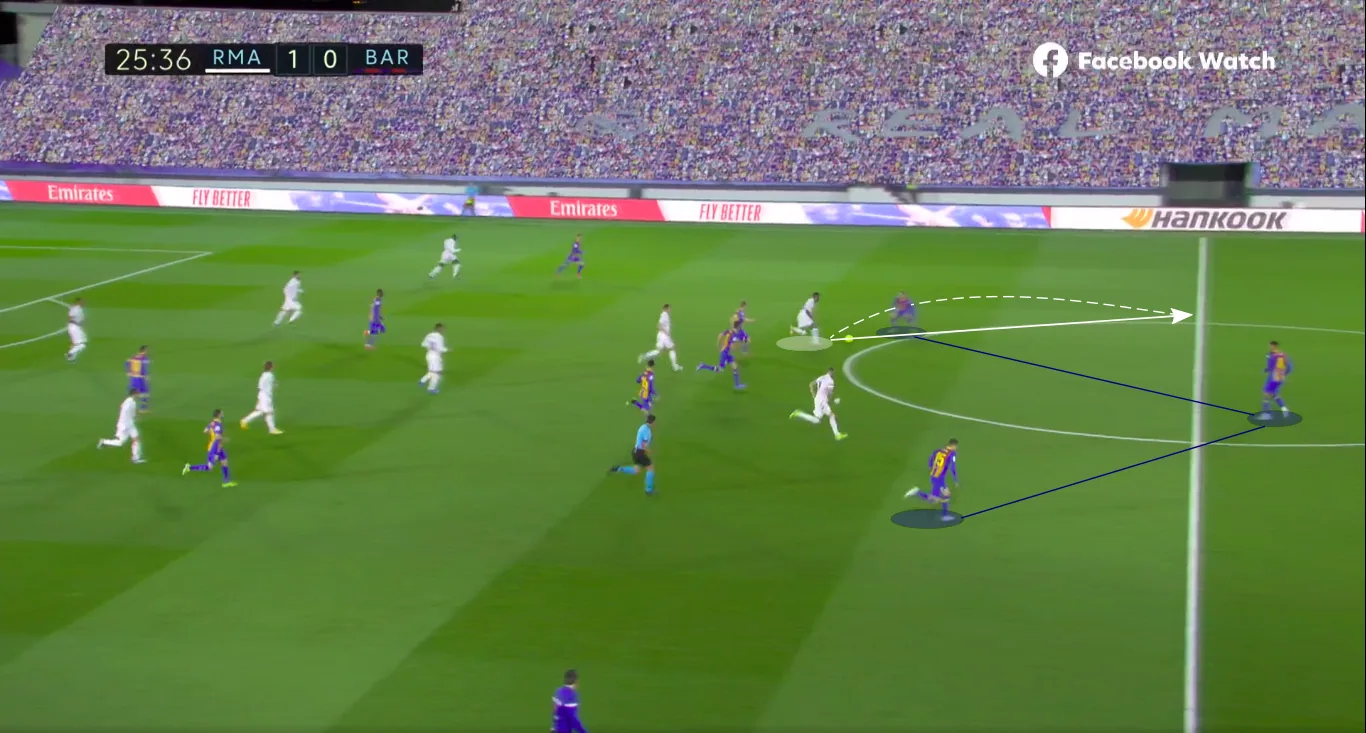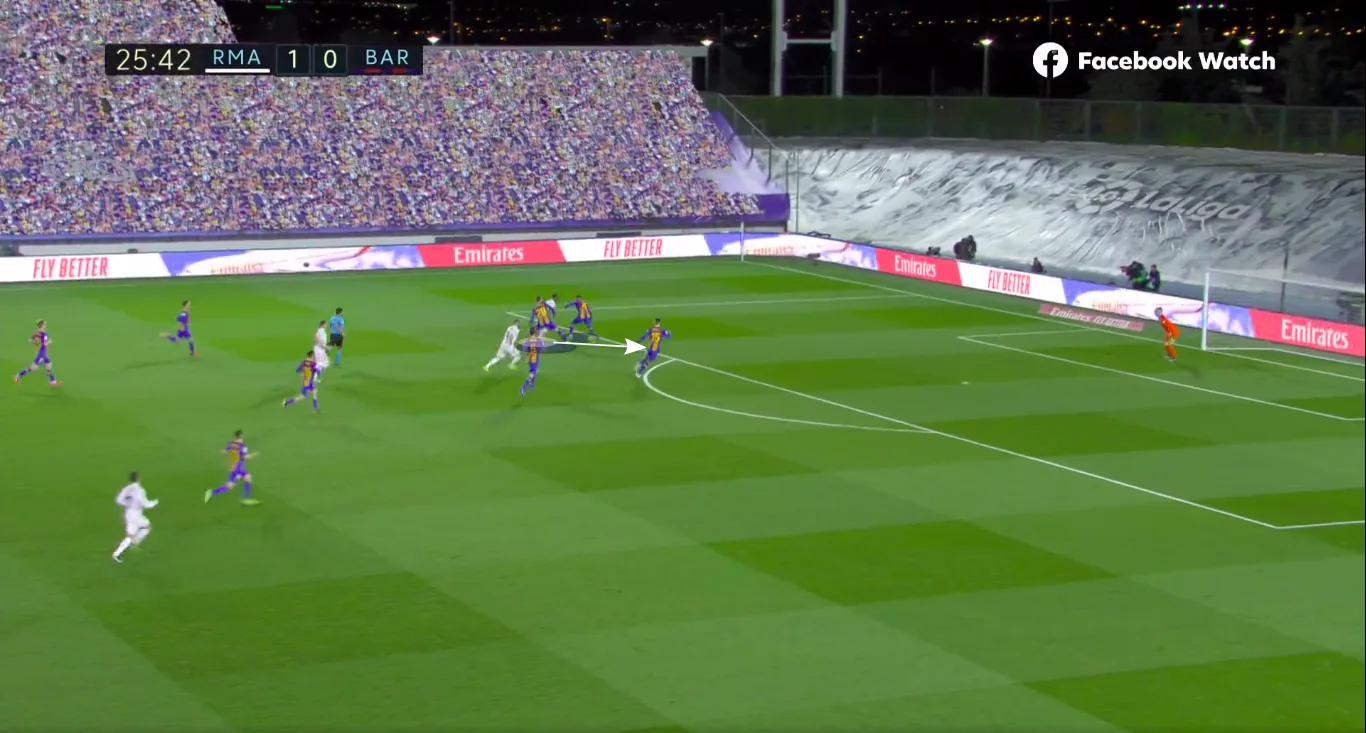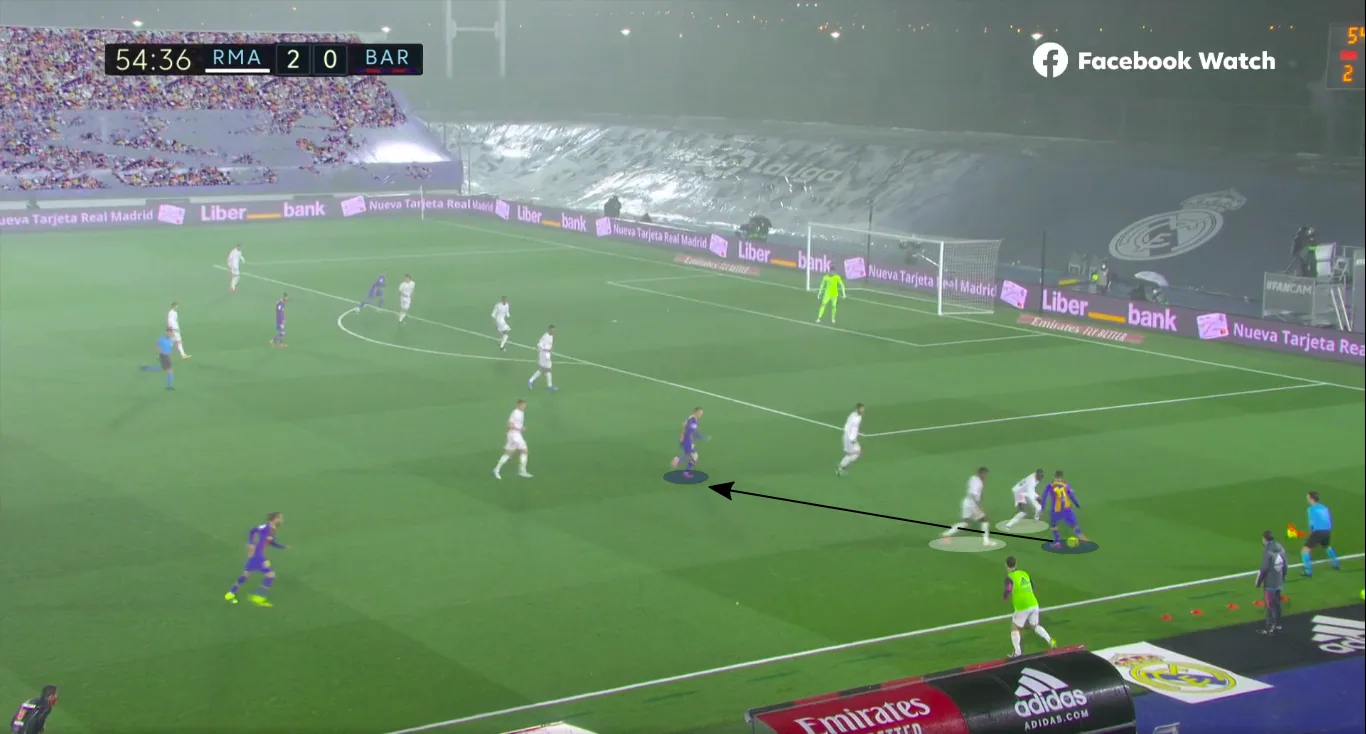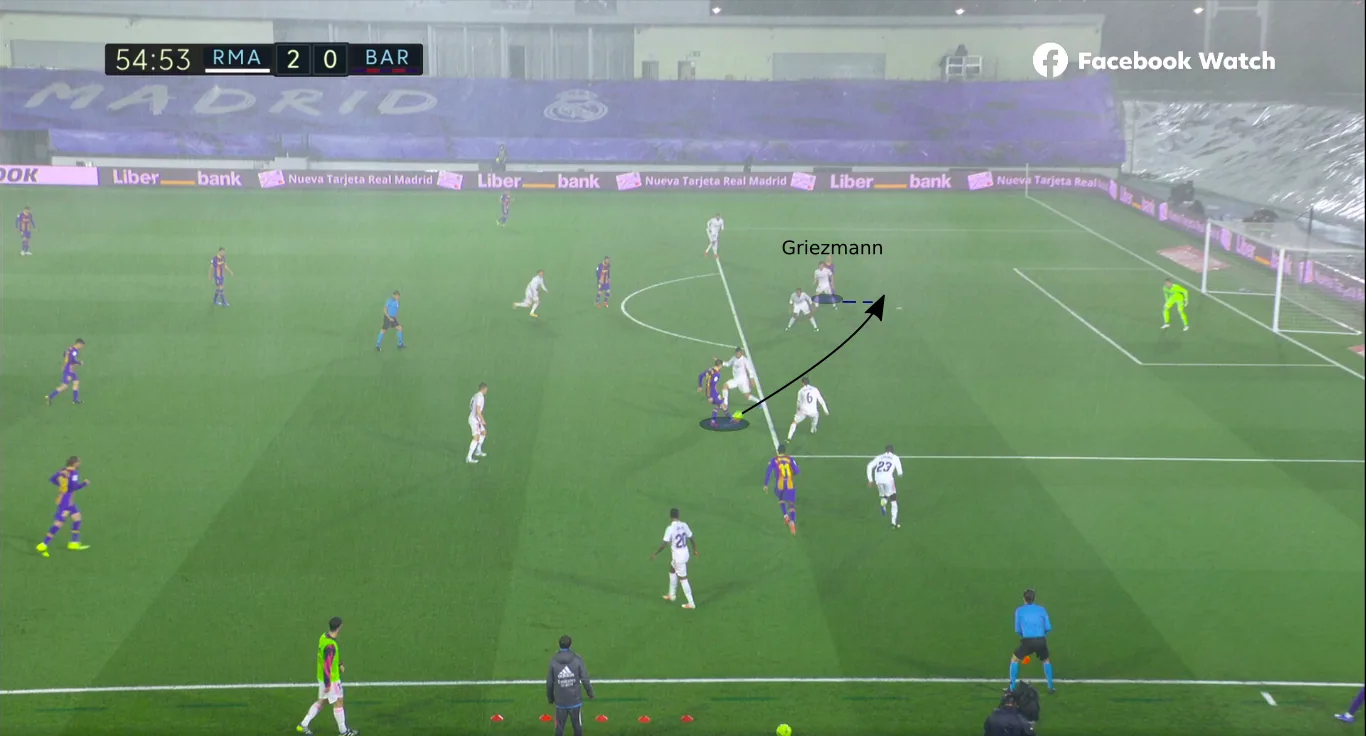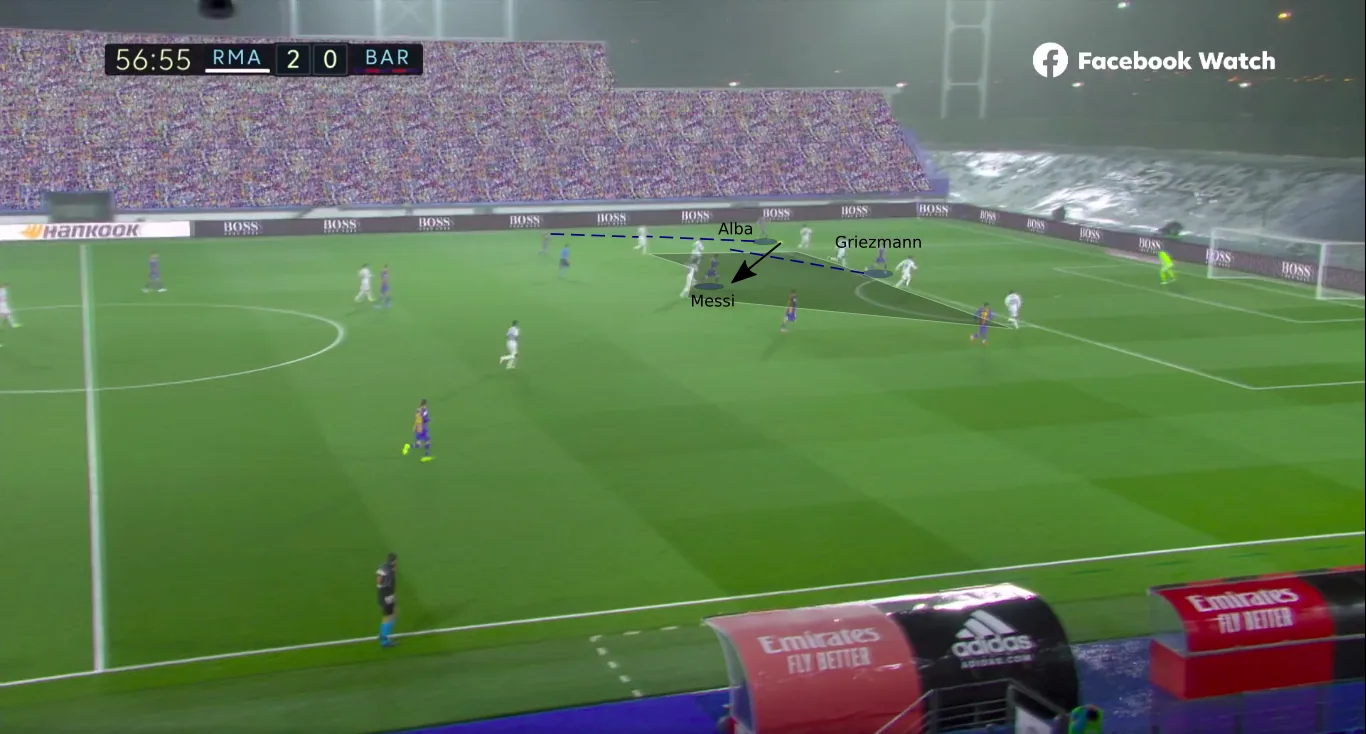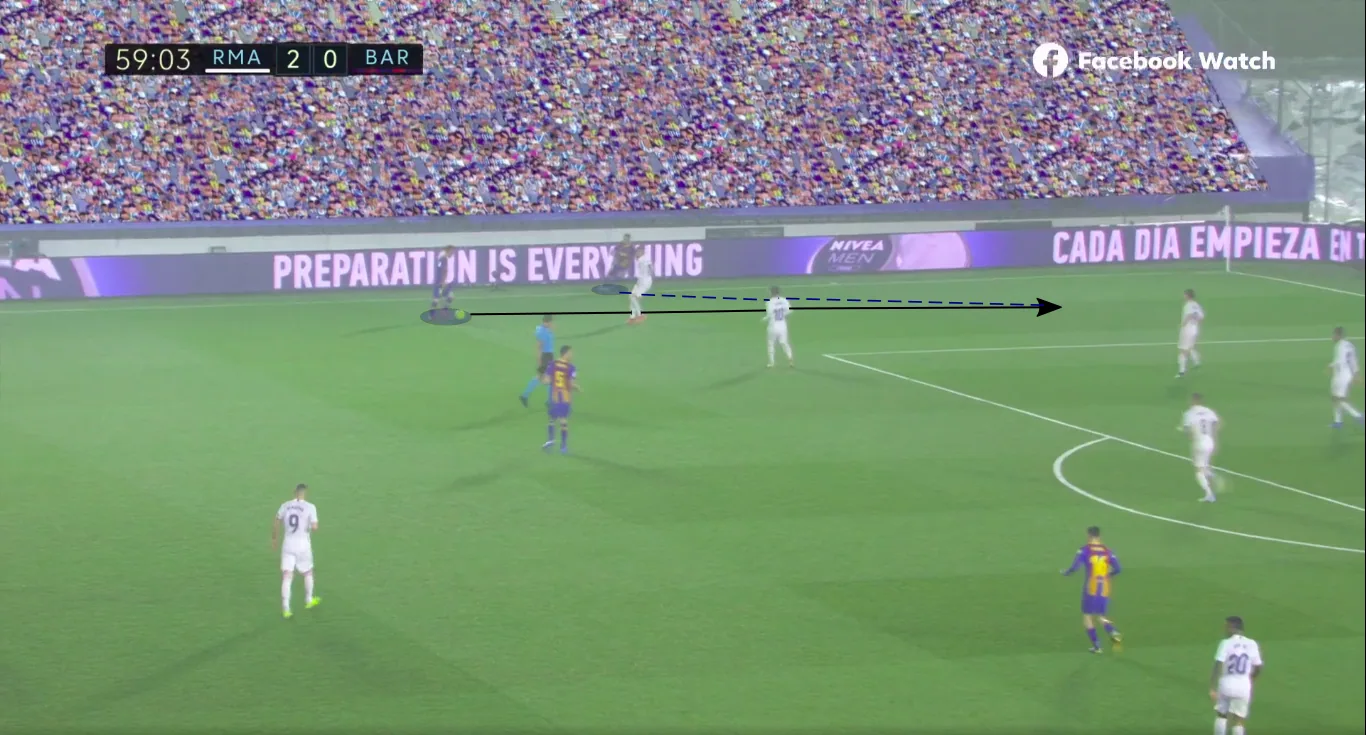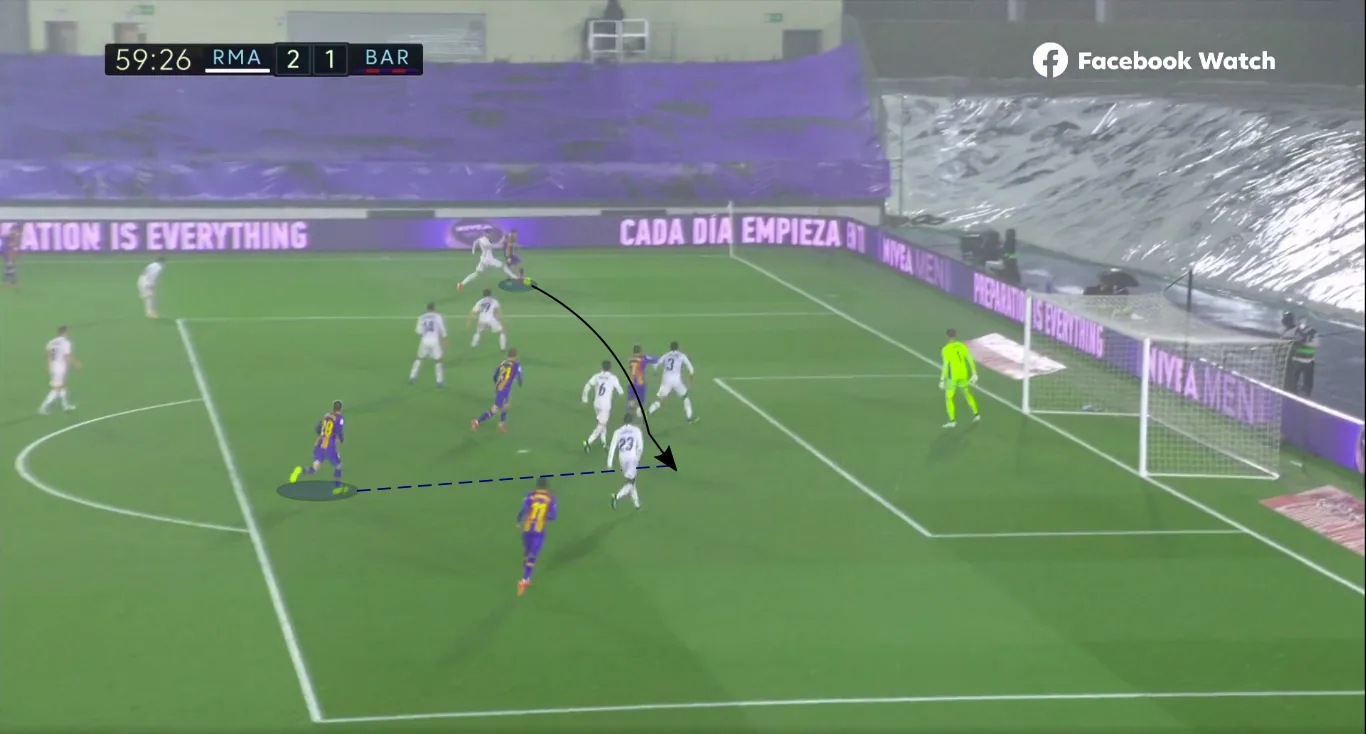Real Madrid and Barcelona may be two falling giants of European football, but their reputation remains high despite their struggles.
Therefore, their clash – El Clásico – is still one of football’s biggest attractions, even if not the best from a quality perspective.
The latest Clásico on Saturday had something much bigger at stake than pride – the La Liga title.
Atlético Madrid looked intent on breaking Madrid and Barça’s duopoly on the Spanish top-flight, getting 50 points in the first half of their season and going clear at the top of the table, but they have slumped incredibly since.
Their drop has allowed Madrid and Barcelona back into the title race, with Los Blancos just two points behind their Catalonian rivals going into this match.
The hosts came away with a massive 2-1 win at the Alfredo Di Stéfano to temporarily move to the top of the standings.
In this analysis, we will take a detailed look at the tactical battle that ensued and the factors that led to Madrid’s victory.
Federico Valverde’s selection
Zinedine Zidane sprung a tactical surprise with his team selection, as he dropped the in-form Marco Asensio (who had scored in each of his last four appearances in all competitions) in favour of Federico Valverde, a natural midfielder, on the right wing.
The main reason for this was defensive in nature. In their new system involving three centre-backs, Barcelona push both of their wing-backs up in possession to add extreme width to their attacks.
A backline of four cannot contend with this, as you can see here with Jordi Alba pushing up from left wing-back.
Since the Spaniard was clearly Barcelona’s greatest attacking threat on the flanks, Zidane decided to ask Valverde to drop into the defensive line and keep an eye on him.
Madrid’s formation out of possession was a 5-4-1, with Valverde and Ferland Mendy tracking the Barcelona wing-backs, Vinícius Júnior dropping into a narrow midfield which had Luka Modrić on the right, and Karim Benzema alone up front.
There was an attacking explanation for his inclusion – Valverde brought improved ball-carrying ability to the table in contrast to Asensio.
This season, the Uruguayan international has averaged more touches (61.4 to 57.1), a greater dribble success rate (73.9% to 70.5%) and more carries (45.6 to 45.5) per 90 than his Spanish counterpart.
This aspect of Zidane’s decision was justified in the build-up to Madrid’s opening goal.
Valverde picked the ball up on the edge of the defensive third and motored forward into space as Barcelona’s defence wasn’t fully in shape.
He decided to go inside, taking a couple of opponents with him and opening up space on the flank for Lucas Vázquez.
The 29-year-old full-back delivered an excellent low cross, and Benzema did the rest with a typically slick finish.
Valverde was arguably Madrid’s best performer in the first half, so his inclusion was nothing short of a masterstroke on Zidane’s part.
Real Madrid’s threat in transition
As Madrid’s defensive shape and first goal indicate, their game plan was to sit back, absorb Barcelona’s attacking pressure and then quickly hit them on the counterattack.
The Blaugrana’s system in possession was centred around dominating possession and territory, and they certainly succeeded with 68.1% of the ball, 400 passes (more than double in contrast to Madrid’s 184) and 500 touches.
To do so, they set up camp well inside the Madrid half, as you can see in the above instance where their back-three is quite close to the edge of the attacking third.
A major disadvantage, though, was that Barcelona could be massively exposed in transition. The first step for Madrid was to create such situations, where their narrow midfield came into play.
Since the visitors only had their wing-backs (who pushed all the way up) on the wings, they mostly had to progress the ball centrally.
Against a narrow midfield, this was a difficult task, so any openings had to be exploited.
Therefore, Madrid set up traps to turn possession over, as you can see in the above instance where Lionel Messi was led to believe that he could run through a gap in the midfield.
However, he was closed down by Benzema (who came from his blindside) and Modrić, who forced him to run into Casemiro and Toni Kroos. Messi certainly is good at football, but shaking off four opponents is a tough ask even for him.
With possession turned over in midfield, Barcelona were in serious trouble as they only had three men back defending against a wave of Real Madrid players.
The star of the show here was Vinícius, whose pace and dribbling were pivotal for the success of his side’s counters.
In this instance, he used his speed to go around Óscar Mingueza after knocking the ball the other way and effectively take the young Spaniard out of the equation.
He then beat Ronald Araújo in a one-on-one, looking to enter the box and get into a shooting position.
The Uruguayan defender inadvertently ended up tripping Vinícius with his trailing leg, for which he was made to pay as Kroos’ free-kick went in after a couple of deflections.
Vinícius led a similar counterattack in the 34th minute, where he found Valverde with a square pass, but the Uruguayan winger only managed to hit the post.
Vázquez was there on the follow-up, but his effort was saved, and Madrid were denied a third goal. However, the threat certainly remained very real, and subsequent moves meant that Los Blancos should have added to their tally in the first half.
Barcelona’s half-time changes
Barcelona had a terrible first half. Although their stats did not look too bad, they barely had a sight of goal and were being carved open on the counter-attack by Madrid.
Ronald Koeman knew that he would have to change things, and he did so by sending Antoine Griezmann on for Sergiño Dest, reverting to a 4-3-3 in the process as Mingueza moved out to right-back.
One reason for shifting to a back-four may have been to nullify Madrid on the transition, and this worked alright as the hosts’ shots tally went down to six from eight in the first half.
However, Barcelona were nearly caught out on a couple of occasions too, so this was not the main motive behind the switch in formation.
Koeman’s main aim must have been to make his side tick better in the attacking third.
Ousmane Dembélé looked clueless as a striker in the first half, which was not entirely his fault as he was deprived of service and out of position. The wing-backs, Dest in particular, did very little on the flanks and Messi was closed down too often and too easily.
The Dutch manager’s solution saw Dembélé move to right winger to help create more on that side, as he is doing here.
The introduction of Griezmann served two purposes. First of all, it added a lively presence in the box that could get on the end of crosses (as is the case here), and secondly, the Frenchman’s inward movements created space that either Alba or Messi could exploit on the wing.
You can see the latter moving into that space here, with Griezmann making a run centrally. Because of this, Messi can afford to drop back and pick up a position between the lines, where he can be incredibly dangerous on the ball.
Since Vázquez had been replaced by Clásico-debutante Álvaro Odriozola, who was making his fifth competitive appearance of the season, towards the end of the first half due to injury, Barcelona decided to concentrate their attacks on the Madrid right as 37% of their moves came from there.
Their goal originated on the left, as Messi used his positional freedom to drift out to the flank and slip Alba in behind on the overlap.
The Spanish full-back delivered a very threatening cross as he got there ahead of Valverde. After Griezmann smartly dummied over the ball, the newly-instated right-back Mingueza ended up poking the ball home.
Koeman made further attacking changes as Sergi Roberto, Ilaix Moriba, Martin Braithwaite and Francisco Trincão all got some minutes under their belt, but none of them could make a telling impact on the scoreline despite Barcelona’s dominance which saw them take twice as many shots as their opponents and keep 68.7% of the ball in the second period.
Conclusion
This Clásico was the epitome of the clichéd tale of two halves, as Madrid breezed through Barcelona in the first period but were severely under the cosh in the second period.
Zidane should take a fair amount of credit for his pre-match tactical decisions, most notably the inclusion of Valverde, which ended up winning the match for his side.
Koeman’s half-time tweaks were on point, and on another day, they could easily have pulled Barcelona level.
But, in the overall balance of things, you have to say that Madrid deserved that. Although they were holding on for dear life in the latter stages of the match and even saw their crossbar rattled in stoppage time, they had numerous chances to add a third goal in the first half, which would have put this game to bed.
This victory will certainly provide Madrid with the confidence they need for their UEFA Champions League round of 16 second leg tie against Liverpool in midweek. It may also leave them a bit too tired to repeat their first-leg performance.
As for La Liga, Los Blancos are temporarily first but will not stay there if their local rivals get a positive result against Real Betis.
What it does mean, though, is that Madrid, Barcelona and Atlético Madrid are all within a point of each other as we enter the final stretch of the season, so the La Liga title race is well and truly on.
Stats courtesy Fbref and WhoScored.
Add Sportslens to your Google News Feed!
